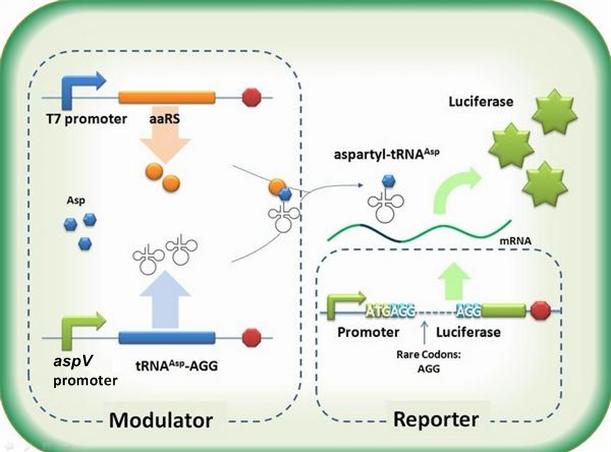Team:SJTU-BioX-Shanghai/Project/Subproject1/Results 4
From 2011.igem.org
(Difference between revisions)
(→Results) |
(→Results) |
||
| (2 intermediate revisions not shown) | |||
| Line 18: | Line 18: | ||
--------------- | --------------- | ||
| - | After the qualitative analysis of aaRS Modulator, we stepped further to analyze aaRS Modulator with quantitative test. We have used PT7-Luc-4AGG (BBa_K567009) as our Reporter to test the function of PT7-TDRS ( | + | After the qualitative analysis of aaRS Modulator, we stepped further to analyze aaRS Modulator with quantitative test. We have used PT7-Luc-4AGG ([http://partsregistry.org/wiki/index.php?title=Part:BBa_K567009 BBa_K567009]) as our Reporter to test the function of PT7-TDRS ([http://partsregistry.org/wiki/index.php?title=Part:BBa_K5670011 BBa_K567011]) and tRNA<sup>Asp</sup>-AGG ([http://partsregistry.org/wiki/index.php?title=Part:BBa_K567012 BBa_K567012]). Results are shown below. |
| - | [[image:11SJTU-aaRS_Modulator%2Bluciferase-4AGG.jpg|frame|center|Fig. Functional Analysis of aaRS Modulator + Reporter for Quantitative Analysis. ER2566 cannot produce luciferase with PT7-Luc-4AGG (BBa_K567009) only. When tRNA<sup>Asp</sup>-AGG (BBa_K567012) and PT7-TDRS (BBa_K567011) are co-transformed into the cell, luciferase is produced. The results proved that aaRS Modulator can regulate protein biosynthesis along with consecutive AGG codons.]] | + | [[image:11SJTU-aaRS_Modulator%2Bluciferase-4AGG.jpg|frame|center|''Fig 1.'' Functional Analysis of aaRS Modulator + Reporter for Quantitative Analysis. ER2566 cannot produce luciferase with PT7-Luc-4AGG ([http://partsregistry.org/wiki/index.php?title=Part:BBa_K567009 BBa_K567009]) only. When tRNA<sup>Asp</sup>-AGG ([http://partsregistry.org/wiki/index.php?title=Part:BBa_K567012 BBa_K567012]) and PT7-TDRS ([http://partsregistry.org/wiki/index.php?title=Part:BBa_K5670011 BBa_K567011]) are co-transformed into the cell, luciferase is produced. The results proved that aaRS Modulator can regulate protein biosynthesis along with consecutive AGG codons.]] |
From data however, we noticed that though aaRS Modulator can act as a regulating tool, it is not as effective as tRNA Modulator. We need to further optimize this Modulator in the future. | From data however, we noticed that though aaRS Modulator can act as a regulating tool, it is not as effective as tRNA Modulator. We need to further optimize this Modulator in the future. | ||
Latest revision as of 21:31, 5 October 2011
 "
"

